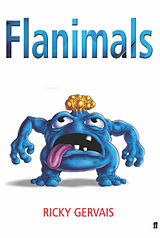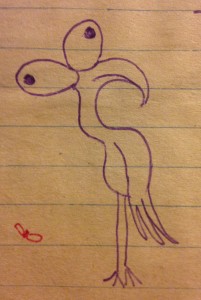 FLANIMALS
FLANIMALS
First published 2004
A short while ago I threw three and a half years worth of university notes into recycling. This may not seem like a big deal to most people but know this—those little ribbons sewn onto the inside of tops to hang them up with; I cut those off and keep them… just in case. That’s right. I’m a just-in-caser. I might use them one day, you don’t know.
Of course I scanned all the notes first and have saved the PDFs because now instead of hoarding the physical notes I can hoard the digital ones instead. In fact my digihoarding now outstrips my physihoarding. It’s highly unlikely I’d ever need to refer to my old uni notes ever again, and even if I did they would be so out of date by now there would be no point in doing so.
Why keep them at all then?
Doodles. Yes, doodles. Loads of them. I’m a doodler and I rarely like to destroy the high art I may happen to scribble on a margin beside a paragraph about Bunyaviridae. Quite often these were doodles of strange little creatures, the uglier the better. Maybe one day, if you’re really really good, I’ll even post some of them… ok, fine, there’s one down there. My propensity for drawing these grotesques is a major factor in my attraction to Flanimals.
The Flanimals were created by Ricky Gervais who sketched them, described them, and then came up with some fabulous names. He then co-opted his friend, Rob Steen, to illustrate his visions in glorious technicolour.
When reading Flanimals, the experienced producer of comical names will recognise the tricks of the trade. The liberal use of plosives, particularly p, b and k, is a time honoured tradition but the Golden Rule of funny is of course -ng. Plunge, flange, bungler, underblenge. Say them out loud and enjoy.
The first chapter gives us a handy guide for the avidFlanimal spotter. Here you will learn about the Wobboid Mump (one of the most useless organisms in the universe) and the Offledermis (born completely inside out) among many more.
Chapter two is on Flanimal behaviour. Ricky’s ground-breaking research in the wild is our greatest source for Flanimal behavioural data. He was certainly the first human to observe a Grundit dipping a Gum Spudlet into a Coddleflop.
Chapter three is not so much a chapter as revision for the exam. Please ensure you have thoroughly studied the first two chapters.

The test is next Monday, it will not be open book.

